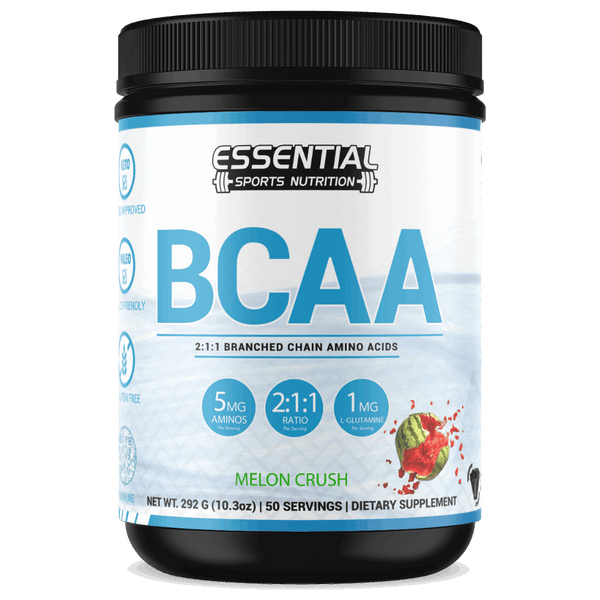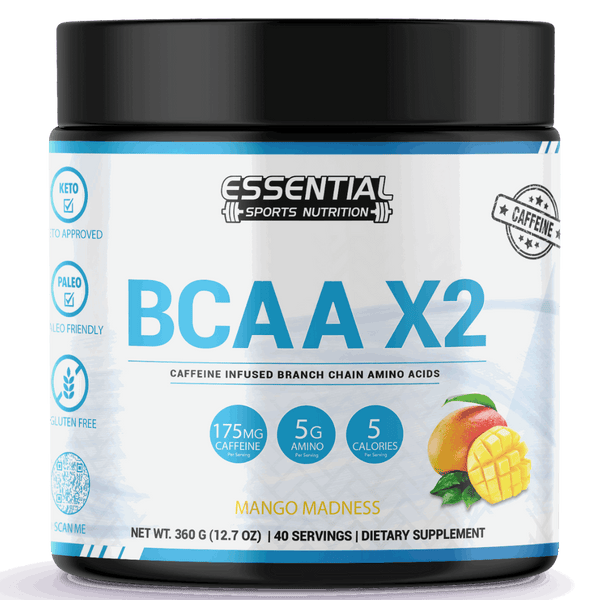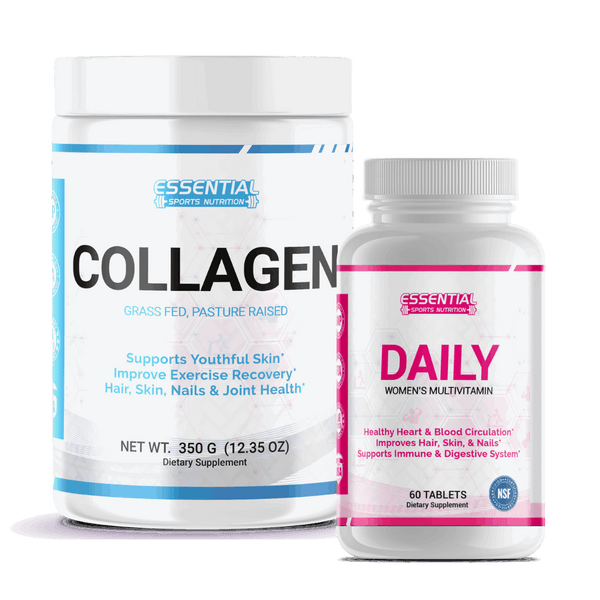Pain-Free Deadlifts: Causes, Prevention, and Relief for Lower Back Pain
Dealing with back tightness after a round of deadlifts is a common challenge for many of us. It's that feeling when your lower back gets really sore and stiff, making it hard to move around without discomfort.
This issue can make you worry about severe injury or stop you from lifting weights. But did you know that not all pain is bad? In fact, proper form during deadlifts has been shown to reduce the risk of hurting your back.
This blog post will explain why your back might feel like this after deadlifting and how to fix it. We'll discuss the difference between regular muscle soreness and more severe pain, highlight some reasons why people experience this discomfort, and offer solutions to ease the strain on your lower back.
With straightforward advice on exercises like Romanian deadlifts, core stability workouts, and prevention tips, including how crucial warming up is, we aim to get you lifting safely again.

Key Takeaways
- Back tightness after deadlifting can result from improper lifting techniques or weak lower back muscles. It is important to know if your pain is just soreness or something more serious.
- Doing exercises like planks, glute bridges, and specific stretches can strengthen your core and lower back. This helps spread the strain of deadlifts across more muscle groups and lowers the risk of injury.
- Correcting common deadlifting mistakes, such as letting hips rise too soon and overloading the lumbar spine, prevents putting extra stress on your back.
- Warm-ups before deadlifting prepare your body for exercise and decrease the chance of hurting your back. Using a weightlifting belt can also support your lower back when lifting heavy weights.
- If you have tightness in your back after deadlifting, rest for several weeks before slowly returning to lifting. During this time, focus on strengthening and stabilizing muscles to avoid future injuries.
Understanding Back Tightness After Deadlifts
Back tightness after doing deadlifts can come from not lifting right or weak back muscles. Knowing if the pain is just normal soreness or something more serious is important.
General Soreness vs Serious Pain
Feeling sore after deadlifts is normal. This kind of pain usually means your muscles are getting stronger. We call it delayed onset muscle soreness (DOMS). It's a sign that you've pushed your body well.
This soreness can last for a day or two and then get better.
Serious pain or sharp pains are different. They feel sharper and don't go away with rest, like DOMS. If you feel a sharp sting in your lower back or experience tingling, there might be a bigger problem, like torn ligaments or damaged muscle fibers in the lumbar spine area.
These injuries need care from health experts to heal and keep them from worsening.
The Role of Weak Lower Back Muscles
Weak lower back muscles play a big part in why you might feel tightness after doing deadlifts. Other body areas must work harder during the lift if these muscles are not vital.
This extra strain can lead to discomfort or even injury in your back. Strengthening exercises aimed at your lower back can make a big difference. They add power and stability, easing the burden on your spine and improving how you perform movements.
For better support and relief from back tightness, focus on strengthening your core and posterior chain, which includes muscles like hamstrings and glutes and the lower back itself.
Exercises such as planks, glute bridges, and specific stretches strengthen these areas without overloading them. This balanced approach helps distribute the effort across more muscle groups during deadlifts, reducing risk of strain or injury.
Common Deadlifting Form Problems
Many people make mistakes while doing deadlifts that lead to back pain. Two big errors are letting hips rise too soon and putting too much pressure on the lower back area.
Premature Rising of the Hips
Lifting the hips too soon is a big mistake in deadlifting. This problem makes the lower back work harder than it should. The spine takes on more weight, sometimes leading to tightness or even injury.
Correct lifting form helps prevent this issue. Keeping the whole body aligned and moving as one unit avoids putting extra stress on any single part.
Using core strength exercises can also stop the hips from rising early. Exercises like planks strengthen the middle body, supporting better posture during lifts. Adding these workouts to your routine builds a solid foundation, ensuring all movements start from a strong center.
This approach decreases the risk of back problems and improves overall lifting performance.
Overloading the Lumbar Spine
Putting too much weight on your back during deadlifts can hurt the lumbar spine, which is the lower part of your backbone. This often happens because people try to lift more than their body can handle safely.
The muscles around the spine, especially those in the lower back called the lumbar paraspinal muscles, work very hard when you do this exercise. If you overload them with too much weight or do the movement wrong, it can lead to injury and pain.
To keep your lower back safe while deadlifting, focus on using a challenging but manageable weight. Make sure you're lifting with good form: Keep your core tight and your back straight as you lift from a standing position.
Doing exercises that strengthen your core and lower back muscles will also help protect your lumbar spine from getting overloaded during deadlifts. These steps reduce strain on sensitive areas like between vertebrae cushions [intervertebral discs] and ensure a healthier approach to one of powerlifting's key movements.
Techniques to Alleviate Back Tightness

Learning the right way to do deadlifts, especially Romanian deadlifts, can help loosen a tight back. Adding core stability exercises strengthens the muscles that support your spine.
Proper Deadlift and Romanian Deadlift Technique
Mastering the correct way to deadlift can prevent back tightness and lower back pain. This also ensures you get the most from your workout without harm.
Here’s how to do a deadlift right:
- Stand with your feet hip-width apart, toes pointing forward. Place a barbell in front of you.
- Bend at the hips and knees, pushing your bottom back as if sitting in a chair. Keep your back straight.
- Grip the barbell with both hands just outside your legs. Use an overhand grip or one hand over and one under.
- Breathe in and brace your core, keeping your chest up and shoulders back.
- Lift the bar by straightening your hips and knees. Push through your heels, not your toes.
- Keep the bar close to your body as you move up.
- At the top of the lift, stand tall, but don’t lean back.
- Lower the bar to the ground by bending at the hips first, then the knees.
For Romanian Deadlifts:
- Start by holding a barbell at hip level with an overhand grip.
- Keep feet hip-width apart and knees slightly bent.
- Hinge forward at your hips, sliding the weight down in front of you, close to your legs.
- Lower as far as flexibility allows without rounding your back.
- Squeeze glutes to return to standing position.
Both exercises strengthen lower back muscles when done correctly using proper form:
- Engage abdominals to support the spine during lifts
- Focus on using glutes, hamstrings, and calves effectively
Work on these techniques slowly at first with lighter weights or even just a PVC pipe or broomstick for practice. This helps build muscle memory for good form before adding weightlifting belts or more weight that can put extra strain on muscles if lifted improperly.
Deadlifting does wonders for building strength when performed with attention to form and safety measures like core stability exercises and appropriate warm-ups are regular parts of training routines.
Remembering these key points helps minimize risks while maximizing benefits from deadlifts.
Core Stability Exercises
Core stability exercises play a crucial role in preventing and easing back tightness from deadlifts. They help activate the necessary muscles to keep your lower back safe during heavy lifts.
- Glute Squeezes: Stand or lie down and tighten your buttocks as hard as you can. Hold this for a few seconds, then release. This simple move strengthens your glutes, which support your lower back.
- Pelvic Tilts: Lie on your back with knees bent and feet flat on the ground. Flatten your lower back against the floor by tightening your abdominal muscles and tilting your pelvis up slightly. Pelvic tilts improve mobility in the lower spine and strengthen core muscles.
- Abdominal Draw-in Maneuver: Start on all fours or lying down with knees bent. Take a deep breath in, then breathe out while pulling your belly button towards your spine without moving your back. This exercise targets deep core muscles that support spinal stability.
- Bridge Exercises: Lie on your back with knees bent and feet flat on the floor. Lift your hips towards the ceiling, creating a straight line from shoulders to knees. Hold then lower back down slowly. Bridges strengthen both the glutes and the lower back, reducing pressure on the spine during deadlifts.
- Dead Bugs: Lie on your back with hands extended towards the ceiling and legs in a tabletop position (knees bent 90 degrees). Slowly extend one leg out straight without touching the floor while moving the opposite arm overhead. Return to start and repeat on the other side. Dead bugs engage and strengthen the core deeply, improving control over lifting movements.
Each of these exercises activates different parts of the core muscle group essential for lifting strength and conditioning, particularly useful for powerlifters and bodybuilders facing challenges like low back pain or wanting to avoid such injuries altogether.
Incorporating these workouts into regular training routines enhances overall stability, ensuring that weightlifters can perform squats, deadlifts, kettlebells swings, and other repetitions safely without putting undue strain on their backs.
Engaging regularly in these core stability exercises provides not just relief but also acts as a preventive measure against potential low-back issues arising from intense strength training sessions.
Prevention Strategies for Back Tightness
To stop back tightness before it starts, getting your body ready is key. A good warm-up activates your muscles and gets blood flowing. Next, wearing a lifting support around your waist can help keep your spine safe while you lift heavy objects.
These steps make a big difference in preventing back soreness and injury.
Warming Up Before Deadlifting
Warming up plays a key role in getting ready for deadlifts. It helps lower the risk of injuries and lessens back pain. Simple stretching exercises can get your muscles ready and protect them during lifting.
These activities wake up your body, making sure everything moves smoothly.
You should also do specific warm-up sets before lifting heavy weights. Start with lighter loads to prepare your muscles and joints. This method builds a strong base for heavier lifting, ensuring your back stays safe.
Warm-ups not only keep you injury-free but also improve your performance on the gym floor.
Utilizing a Weightlifting Belt
A weightlifting belt wraps around your waist to help stabilize your lower back during heavy lifts. It enhances intraabdominal pressure, which supports the spine and can reduce the risk of injury.
Studies suggest that these belts not only lessen spinal curvature but also decrease strain on back muscles by increasing muscle activity in the area.
Wearing a weightlifting belt right can make a big difference in lifting performance and safety. It's key for preventing energy loss through your midsection, keeping you tighter and more braced for lifts like deadlifts or squats.
Despite some debate over their effectiveness, many lifters find improved posture and reduced stress on the lower back with proper use.
When to Return to Deadlifting After Back Tightness

Wait for several weeks before going back to deadlifts after experiencing lower back tightness. This rest period lets your muscles recover from the strain. During this time, focus on strengthening stabilizing muscles to help prevent future injuries.
Ease back into lifting with exercises that have a shorter range of motion.
Start light and listen closely to your body's signals as you gradually increase weight. Use proper form always and consider wearing a weightlifting belt for extra support during early stages of return.
If pain returns or increases, take a break and consult with a professional in physical therapy to address any underlying issues safely.
Conclusion

Understanding the difference between normal muscle soreness and serious pain makes us smarter about back health. We've learned that proper lifting forms, like the correct way to do deadlifts and Romanian deadlifts, protect our lower backs.
Core stability moves also play a big role in keeping our spines safe. Remember, warming up and using weightlifting accessories can prevent many issues before they start. Have you thought about how these tips could improve your workout routine? Strengthening your back improves your lifts and boosts your overall fitness journey.
With the right precautions and preparation, injury-free lifting is a very attainable goal!
Lower Back Pain After Deadlifts FAQs
Q: Why does my lower back hurt after doing deadlifts?
A: Lower back pain after deadlifting often happens if your form is off, like not keeping your back braced or if you lift too much weight too soon. It could also be due to not warming up properly before starting your workout. Deadlifts primarily target the lower back muscles along with other muscle groups such as hamstrings and glutes. The tightness in your lower back could be due to muscle soreness or fatigue from performing deadlifts.
Q: Can deep tissue massage help relieve back tightness from lifting?
A: Yes, deep tissue massage therapy can be very helpful for relieving back tightness. It works by releasing the tension in the muscles that might have been caused by lifting heavy weights or a minor back injury.
Q: What are some ways to prevent back injuries when deadlifting?
A: To avoid back injuries, always warm up before you start lifting and make sure your form is correct—keep your feet planted firmly and don’t round your spine. Also, practice exhaling as you lift to reduce strain.
Q: Is cold therapy good for treating a sore back after exercise?
A: Cold therapy can be great for reducing inflammation and numbing sore areas if you experience pain in your lower back after exercising. Applying ice packs for short periods right after your workout can provide relief.
Q: How important is it to cool down after doing heavy lifts like deadlifts?
A: Cooling down with stretches or light walking is very important after heavy lifts because it helps bring down heart rate gradually and prevents muscle stiffness, especially in the lower back area which gets heavily worked during deadlifts.
Q: How can I prevent lower back pain after deadlifting?
A: To prevent lower back pain after deadlifting, ensure you have proper form and technique while performing the lift. Additionally, gradually increase the weight you lift to avoid straining your lower back.
Q: What is the difference between soreness and pain in the lower back after deadlifts?
A: Soreness in your lower back after deadlifts is usually due to muscle fatigue and will improve with rest. Pain, on the other hand, can be a sharp or persistent discomfort that may indicate an injury.
Q: Are there specific exercises to help with lower back soreness after deadlifts?
A: Yes, exercises such as Romanian deadlifts, hip hinges, and other back-strengthening exercises can help alleviate lower back soreness and prevent future discomfort.
Q: What should I do if I experience lower back pain after deadlifting?
A: If you experience lower back pain after deadlifting, it is important to rest, ice the affected area, and consult with a healthcare professional if the pain persists or worsens.
Q: How can I avoid lower back injuries while deadlifting?
A: To avoid lower back injuries while deadlifting, focus on maintaining a neutral spine, engaging your core muscles, and not lifting more weight than you can handle with proper form.
Q: What are the common causes of lower back pain after deadlifts?
A: Common causes of lower back pain after deadlifts include improper form, lifting heavy weights with poor technique, and not allowing sufficient recovery time between lifting sessions.




























